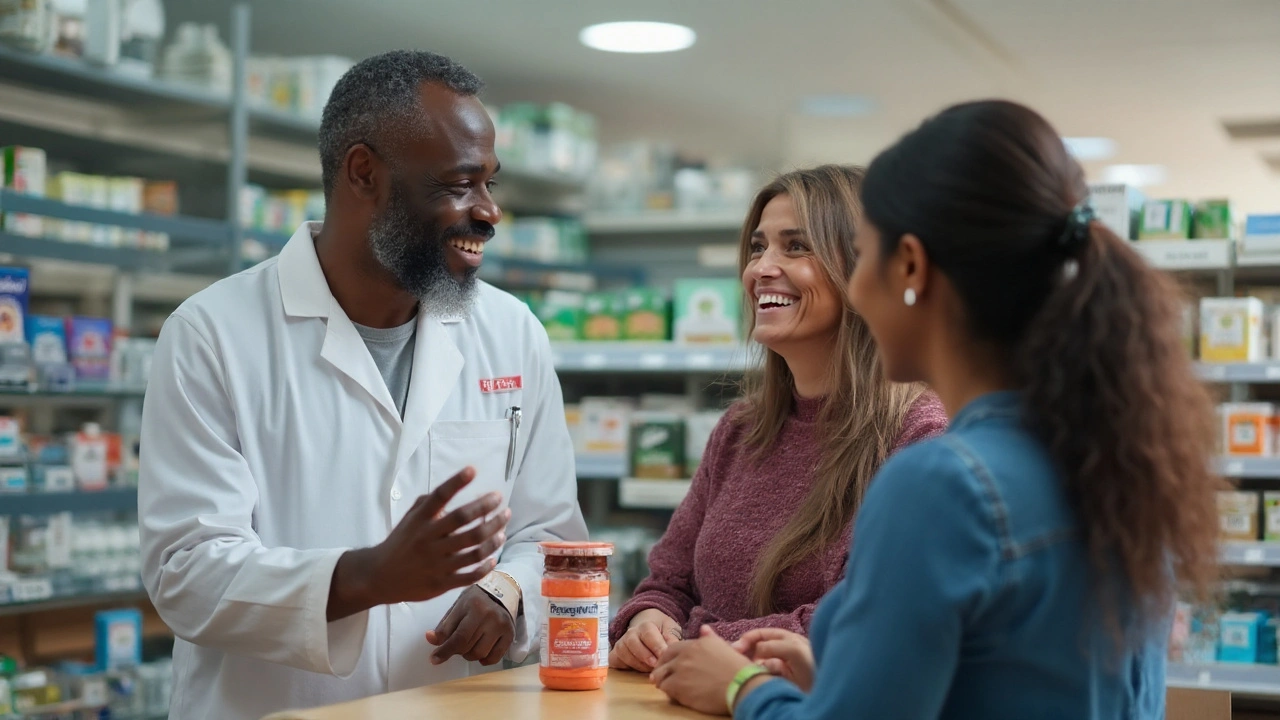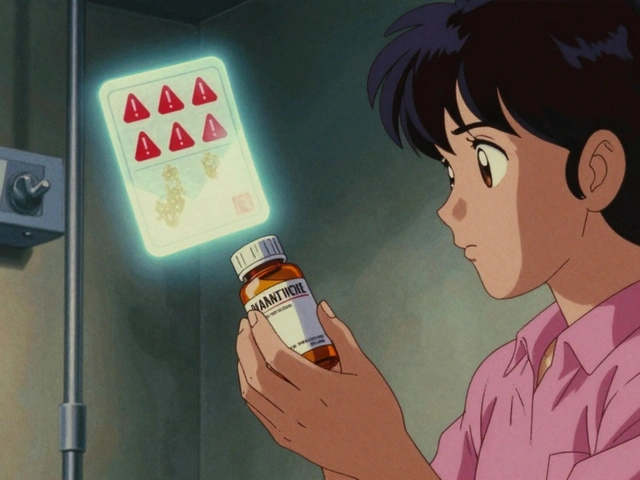Big promise, simple reality: coral supplements are mostly calcium with a side of trace minerals. If you’re low on calcium or your diet is spotty, they can help. If you expect a miracle cure or an alkalinity reset for your whole body, you’ll be let down. I’ll show you where coral shines, where it doesn’t, and how to use it without getting burned by hype, contaminants, or bad dosing.
- Coral is essentially calcium carbonate with small amounts of magnesium and trace minerals; it’s not magic, but it can fill mineral gaps.
- Best use cases: supporting bone health when diet falls short, especially for older adults with higher calcium needs.
- Realistic dose: 200-600 mg elemental calcium/day from supplements, split doses ≤500 mg each, based on your diet.
- Watch for interactions (thyroid meds, certain antibiotics, PPIs) and choose products tested for heavy metals, ideally fossilized (not live) coral.
- Evidence supports calcium + vitamin D for fracture risk in some groups; no credible proof that coral itself is better than other calcium forms.
What Coral Supplements Really Are (and Aren’t)
Start with the basics. “Coral” on a bottle almost always means a mineral complex dominated by calcium carbonate-the same form found in limestone and many standard calcium tablets. Companies often market Okinawan “Sango” coral or fossilized coral. Either way, the core payload is calcium, not a mysterious ocean superfood.
What’s inside? Typical labels show about 1,000-1,500 mg of coral powder per serving, which gives roughly 350-600 mg of elemental calcium because calcium carbonate is 40% calcium by weight. You’ll also see small amounts of magnesium and trace minerals like strontium, but they’re usually too low to carry the show.
What can coral do? If your daily calcium intake is under target, coral can help bring you to the recommended range. The NIH Office of Dietary Supplements puts adult calcium needs around 1,000 mg/day for most adults, 1,200 mg/day for women 51+ and men 71+. Average intakes from food often miss the mark, especially for women. That gap is where a supplement can pull its weight.
What won’t coral do? It won’t alkalize your blood. Your blood pH is tightly controlled, and food or supplements don’t change that in a meaningful way. It also doesn’t outperform other calcium sources in credible head-to-head trials. Claims that coral calcium uniquely reverses disease have been slapped down before; the U.S. Federal Trade Commission charged marketers in the early 2000s for deceptive coral calcium claims. Solid science supports calcium (with vitamin D) for bone health in some populations, not a specific “coral” advantage.
Where the evidence lands: Bone health is the main, sensible target. The Bone Health & Osteoporosis Foundation notes that about one in two women and up to one in four men over 50 will break a bone due to osteoporosis. Adequate calcium and vitamin D are standard parts of prevention strategies. Large trials suggest calcium plus vitamin D can modestly reduce fracture risk in older, low-intake groups, especially in institutionalized settings. Calcium alone does less, and it’s not a replacement for weight-bearing exercise, protein, or fall prevention.
Is coral safer or more absorbable? Absorption of calcium carbonate (including coral) depends on stomach acid, so it’s better with meals. If you’re on acid-reducing meds or have low stomach acid, calcium citrate often absorbs better. No convincing data shows coral powder beats citrate for absorption.
How to Use Coral Safely: Dosing, Timing, Interactions
If your diet already gives you enough calcium, you don’t need a supplement. If you’re short, a supplement can plug the gap. Here’s a simple way to get it right.
- Estimate your calcium from food. Quick counts: one cup of milk or fortified plant milk ~300 mg; yogurt ~300-400 mg/cup; an ounce of hard cheese ~200 mg; calcium-set tofu ~200-300 mg per serving; leafy greens vary (kale ~100 mg/cup cooked, spinach has calcium but less bioavailable).
- Find your target. Most adults: 1,000 mg/day. Women 51+ and men 71+: 1,200 mg/day. Don’t exceed the tolerable upper intake: 2,500 mg/day (19-50) or 2,000 mg/day (51+), from food + supplements.
- Fill the gap with a supplement. Only cover what you’re missing. If you’re short by 400 mg, don’t take 1,000 mg. More is not better.
- Split doses. Your gut absorbs calcium best at doses of 500 mg or less. Two smaller doses beat one big slug.
- Time it right. Take coral (a carbonate) with meals for better absorption. Space it at least 2 hours apart from iron or thyroid meds.
Label math cheat-sheet: If a serving lists 1,250 mg coral calcium and 500 mg “elemental calcium,” the useful number is the 500 mg. That’s what counts toward your daily total.
Interactions to know:
- Thyroid hormone (levothyroxine): Calcium binds it. Separate by at least 4 hours.
- Antibiotics: Tetracyclines and fluoroquinolones can chelate with calcium. Separate by 2-6 hours depending on the drug; your pharmacist can give exact spacing.
- Bisphosphonates: Take on an empty stomach; delay calcium for at least 30-60 minutes after.
- PPIs/H2 blockers: Reduced stomach acid can lower carbonate absorption. Calcium citrate is often a better pick here.
- Thiazide diuretics: Can raise blood calcium. Ask your clinician before adding calcium supplements.
Risks and guardrails:
- Kidney stones: Supplemental calcium has been linked to a small increase in stone risk in some studies when taken away from meals. Taking with food and staying hydrated helps. Dietary calcium from food doesn’t raise risk and may lower it by binding oxalate in the gut.
- Cardiovascular questions: Large reviews don’t show a clear increase in heart events with calcium at typical doses, but avoid big, bolus dosing and don’t exceed the upper limit.
- Hypercalcemia: Rare unless you overdo it or have conditions like hyperparathyroidism or certain cancers. Symptoms include constipation, nausea, confusion-get checked if you feel off.
Vitamin D matters: Calcium needs a ride into the bloodstream. Most adults do well with 800-1,000 IU of vitamin D3 daily from diet, sun, or supplements, adjusted by blood levels if your clinician checks them.

Choose a Quality Coral Product: Proofs, Sustainability, Cost
Not all coral is equal. You want two things: it does what the label says, and it won’t add contaminants to your body.
Quality signals to look for:
- Elemental calcium clearly listed. If a brand only lists “coral powder 1,000 mg” without the elemental calcium number, skip it.
- Third-party testing. USP Verified, NSF, or ConsumerLab-tested products reduce your risk of heavy metals and dosing errors.
- Source transparency. Prefer fossilized, above-sea coral (often from Okinawa seabed deposits) rather than live reef harvests. Look for statements on CITES compliance and environmental stewardship.
- Heavy metal limits. Brands should state compliance with California Prop 65 or equivalent internal standards for lead and other metals. Calcium sources-especially mined ones-can carry trace lead if not purified.
- Smart add-ons. Vitamin D3 helps. Magnesium can help if you’re low, but many coral products provide little magnesium. Avoid megadoses of anything in the same capsule.
What coral competes with:
| Option | Elemental Ca% | Absorption notes | Pros | Cons | Typical cost/day (US) |
|---|---|---|---|---|---|
| Coral calcium (carbonate) | ~40% | Better with meals; needs stomach acid | Natural mineral mix; moderate pill size | Quality varies; watch heavy metals; no proven edge vs other carbonate | $0.25-$0.70 |
| Calcium citrate | ~21% | Absorbs well with or without food; good with PPIs | Gentler if low acid; flexible timing | More pills for same dose; pricier | $0.30-$0.80 |
| Algae-based calcium (lithothamnion) | ~30-32% | Good absorption; includes trace minerals | Plant-origin; sustainability messaging | Higher cost; quality still varies | $0.60-$1.20 |
| Dairy/fortified foods | Varies | High bioavailability in most foods | Protein + other nutrients; no pill | Lactose issues for some; calories | N/A (food budget) |
Reading the label like a pro:
- Elemental calcium per serving should match your target gap (often 200-600 mg/day).
- Ingredients should be short: coral calcium, maybe vitamin D3. Fancy proprietary blends don’t add much here.
- Batch number and expiration date printed clearly. No batch = no trust.
- Capsule count vs dose: If your dose is 500 mg elemental and each capsule gives 250 mg, you’ll need two per day. Check cost per 100 mg elemental calcium.
Environmental and safety note: Reputable brands use fossilized, land-mined coral remains, not live reef coral. Avoid products that brag about “fresh reef” anything. Healthy reefs matter more than any supplement.
Credibility corner (sources you can look up): NIH Office of Dietary Supplements (calcium, vitamin D, magnesium pages), Bone Health & Osteoporosis Foundation guidance on calcium and fracture risk, U.S. Pharmacopeia and NSF for supplement quality, and the FTC’s action against deceptive coral calcium claims in 2004. These aren’t affiliate pitches-just places that publish primary standards or large reviews.
Real-World Scenarios, FAQs, and Next Steps
Let’s put this to work. Here are simple, real situations and what I’d do if we were talking across a kitchen table in Seattle on a rainy morning.
Scenario 1: You eat little dairy and your tracker shows ~600 mg/day from food. You’re a 55-year-old woman aiming for 1,200 mg/day. Add 600 mg elemental calcium daily, split into two 300 mg doses with meals, plus 1,000 IU vitamin D3 if you’re not already taking it. Coral or citrate both fine; if you use a PPI, pick citrate.
Scenario 2: You’re 35, active, diet gives ~1,000 mg/day. You want “extra insurance.” You don’t need a supplement. Focus on protein, strength training, and maybe vitamin D in winter if your levels are low.
Scenario 3: You’ve had a calcium oxalate kidney stone. Work with your clinician. If you supplement, take calcium with meals to bind oxalate, keep daily fluid high, and don’t exceed your target. Coral is not special here.
Scenario 4: You’re on levothyroxine. Keep your thyroid pill first thing in the morning with water. Take any calcium 4+ hours later. End of story.
Scenario 5: You avoid animal products. Coral is mineral, not animal-derived, but some vegans prefer algae-based calcium or citrate for environmental or origin reasons. Choose what aligns with your values and meets quality standards.
Quick checklist: Should you try coral calcium?
- My daily food intake meets 1,000-1,200 mg calcium: No → Maybe; Yes → Probably skip.
- I’m willing to take it with meals and split doses ≤500 mg: Yes → Good; No → Consider citrate.
- I take meds that interact: Yes → I’ll time doses carefully or choose another form.
- I’ve checked quality (USP/NSF/ConsumerLab) and source (fossilized): Yes → Green light.
Mini‑FAQ
- Is coral calcium better than regular calcium carbonate? No solid evidence says it is. The body sees carbonate as carbonate. Choose based on quality, dose, and tolerance.
- Do the trace minerals in coral matter? They’re usually present in small amounts that don’t drive outcomes. If you need magnesium, dose it separately based on your needs.
- Can coral calcium boost my energy or immunity? Not specifically. Calcium supports many functions, but it’s not an energy supplement. Fix sleep, protein, iron/B12 if low, and training first.
- What about lead contamination? It’s a risk in poorly purified mineral supplements. Third‑party certifications reduce this risk. That’s why testing matters.
- How long until I feel anything? Calcium isn’t a “feel it today” nutrient. You’re investing in bone over years. The win is fewer fractures down the road.
Pro tips I’ve learned the hard way:
- Pair calcium with protein and strength training. Bones love load and amino acids.
- Don’t stack calcium with a multivitamin that already has a chunk of it. Add up the totals.
- If calcium constipates you, increase fluids, add fiber, or try citrate or smaller doses.
- In winter at northern latitudes, vitamin D often dips. Consider checking levels if you’re indoors a lot.
Decision tree (quick):
- If you’re on acid-reducing meds → Prefer citrate; if you insist on coral, always take with meals.
- If you need 300-600 mg/day → Coral can work; verify elemental calcium and testing badges.
- If sustainability is your first filter → Fossilized coral or a plant-based algae calcium with third‑party testing.
- If you’ve had kidney stones → Take with meals, keep dose modest, discuss with your clinician.
Bottom line for expectations: Coral can help you hit calcium targets. It won’t rewrite human biology, detox your body, or fix weak bones without the basics: food, vitamin D, lifting, and smart fall prevention.
If you’re going to try just one phrase from this guide, make it this: choose a tested product, dose to your gap, take it with meals, and keep it boringly consistent. That’s how you turn a supplement into a result.
One last thing before you order: make sure the label explicitly states “elemental calcium per serving,” look for USP/NSF or a recent ConsumerLab test, and confirm the coral source is fossilized. If those three boxes are ticked, you’ve done 90% of the work of buying smart.
For search clarity, yes, this entire guide applies to a coral calcium supplement. If your bottle says “coral minerals” or “Sango coral,” treat it the same way: judge the dose, test status, source, and your real dietary need.







ankush kumar
August 25, 2025 AT 12:48Hey everybody, let me just walk you through the whole coral calcium thing because it can be a bit confusing if you’re not used to reading supplement labels, and I’ll try to keep it friendly and inclusive for all of us, no matter your background or diet, ok? First off, coral is basically calcium carbonate, which is the same stuff you find in limestone, so there’s nothing magical about it, even though some marketers love to hype it as a miracle mineral, which is honestly a bit of a stretch. The real benefit comes when your daily diet is lacking the recommended 1,000‑1,200 mg of calcium, especially for older adults who need more for bone health, and in those cases a supplement can fill the gap nicely. You should always check the label for the amount of elemental calcium, because the number that says “1,250 mg coral” is just the raw powder and only about 40 % of that is actual calcium, so you might be getting 500 mg elemental, which is what counts. It’s also important to split your dose into two servings of less than 500 mg each, because your gut absorbs calcium best in smaller chunks, and taking it with a meal helps the carbonate form dissolve, unless you’re on a proton‑pump inhibitor, in which case calcium citrate would be a better choice. Watch out for interactions – calcium can bind to thyroid meds, certain antibiotics, and bisphosphonates, so you’ll want to space them out by a few hours, otherwise you might not get the full effect of either. If you’re worried about heavy metals, look for third‑party testing like USP or NSF, because some low‑quality coral powders have been found to contain lead, which is definitely not something you want in a daily supplement. Don’t forget vitamin D, because without enough D the calcium won’t be absorbed efficiently, and most adults need around 800‑1,000 IU per day, either from sun, food, or a modest supplement. And just so you know, taking more than the tolerable upper intake level – 2,500 mg for younger adults or 2,000 mg for older folks – can increase the risk of kidney stones or cardiovascular issues, so keep your total intake in check. Finally, remember that calcium is only one piece of the puzzle for bone health; weight‑bearing exercise, adequate protein, and avoiding smoking are equally important, so don’t rely solely on a pill to keep your bones strong. I hope this clears up some of the hype and gives you a practical roadmap for using coral calcium safely and effectively. If you have any questions, feel free to ask – I’m happy to help you navigate the supplement aisle. Cheers!
Cameron White
September 4, 2025 AT 16:30So, coral calcium looks like another product that big companies push to make money, and it’s easy to see why folks might be skeptical. The basic idea is just calcium carbonate, nothing exotic, and the body handles it like any other calcium source. If you already get enough calcium from food, adding more probably won’t change anything. Just make sure you read the label and don’t exceed the recommended dose, because more isn’t always better. And keep an eye on any hidden fees or “secret” ingredients that some sellers like to hide.
Amélie Robillard
September 14, 2025 AT 20:11Wow, another “miracle” coral supplement – because what the world really needed was more calcium from the ocean, right? 😂 If you’re looking for a tiny boost to hit your daily calcium target, sure, coral can do that, but don’t expect it to turn you into a superhero. The real magic is in reading the label, spotting the elemental calcium amount, and making sure it’s third‑party tested – otherwise you might be buying a fancy sand powder. 🙄 And if you’re on any meds, remember to separate them by a few hours; the supplement companies love to skip that part in their glossy ads. Bottom line: it’s a decent, boring calcium source, not a secret elixir. 🌊💊
Fae Wings
September 24, 2025 AT 23:52Oh my goodness, the drama of calcium! 🌟 Imagine your bones as an ancient castle, and each gram of calcium is a brick keeping the walls from crumbling – now picture a sneaky thief (aka a nutrient deficiency) trying to steal those bricks. Coral calcium swoops in like a heroic tide, delivering those precious bricks just when the castle needs reinforcement. But beware, dear reader, because even heroes have flaws – too much calcium can lead to kidney stones, and if you’re on thyroid medication, the hero might accidentally jam the gate. So take it with meals, split the dose, and let the castle stand tall! 😊
Anupama Pasricha
October 5, 2025 AT 03:34From a nutraceutical perspective, the bioavailability of coral-derived calcium carbonate is contingent upon gastric acidity, as the dissolution kinetics follow a pH‑dependent solubility curve. In patients on proton‑pump inhibitors, the resultant hypochlorhydria attenuates calcium carbonate absorption, necessitating either a shift to calcium citrate or adjunctive acidifiers. Moreover, trace elemental analysis via ICP‑MS is advisable to quantify potential heavy metal contaminants, especially lead and arsenic, which could compromise safety thresholds set by the WHO. When calibrating the supplementation regimen, integrate the dietary calcium intake derived from dairy, fortified plant milks, and leafy greens, employing a food frequency questionnaire for precision. Ensure the total elemental calcium does not exceed the established UL to mitigate nephrolithiasis risk. Finally, synergistic co‑administration of vitamin D3 (800‑1000 IU) optimizes intestinal calcium transport via upregulation of calbindin expression.
Bryce Charette
October 15, 2025 AT 07:15Hey, great points above! Just wanted to add that if you’re juggling multiple supplements, a quick spreadsheet can help you keep track of how much calcium you’re actually getting each day. It’s easy to double‑count if you have a multivitamin that already includes calcium. And don’t forget to stay hydrated – water helps move everything through your system smoothly. Keep it simple, stay consistent, and you’ll see the benefits without any nasty side effects.
Christina Burkhardt
October 25, 2025 AT 10:57Reading through the guide, it’s clear that selecting a reputable coral calcium product hinges on three core criteria: transparent labeling of elemental calcium, third‑party verification (USP, NSF, ConsumerLab), and sourcing from fossilized deposits to avoid ecological impact. If you verify these factors, you’ll have mitigated most of the common concerns about contamination and efficacy. Pair the supplement with adequate vitamin D and a calcium‑rich diet for optimal bone health. Consistency is key – taking the recommended split dose with meals will maximize absorption and minimize gastrointestinal discomfort.
liam martin
November 4, 2025 AT 13:38In the grand theatre of human physiology, calcium plays the role of both steadfast guardian and fickle tyrant, bestowing strength upon our bones while demanding reverence in dosage. Coral, as a mere vessel of this mineral, is but a symbol of nature’s quiet generosity, yet we, ever‑ambitious, imbue it with mythic expectations. To chase the promise of a miracle from a rock is to seek enlightenment in a candle’s flame – the light is there, but it does not illuminate the soul. Let us, therefore, embrace the humble truth: calcium sustains, but only when wielded with wisdom, not worship.
Ria Ayu
November 14, 2025 AT 17:20Hello friends! Think of calcium like the scaffolding that holds up the grand cathedral of our bodies. Without enough, the arches might wobble, but too much can make the walls too heavy. Coral calcium is simply one source of that essential mineral, and it works best when paired with sunlight’s gift of vitamin D and a balanced diet. Stay mindful, enjoy your meals, and let the little calcium bricks do their quiet work.
maya steele
November 24, 2025 AT 21:01To summarize the practical considerations for incorporating coral calcium into a therapeutic regimen: 1) Verify that the product label specifies the exact amount of elemental calcium per serving; 2) Ensure the supplement has undergone third‑party testing for heavy metals and meets USP or NSF standards; 3) Assess the patient’s total calcium intake from dietary sources to avoid exceeding the tolerable upper intake level; 4) Recommend concurrent vitamin D supplementation (800–1,000 IU daily) to facilitate optimal absorption; and 5) Advise administration with meals for carbonate forms, or consider calcium citrate in cases of hypochlorhydria. Adhering to these protocols will maximize efficacy while minimizing potential adverse effects.
Sharon Lax
December 5, 2025 AT 00:43Honestly, the whole coral calcium hype feels like a re‑branding of cheap calcium carbonate with a splash of marketing jargon. Most of the supposed “trace minerals” are present in such minuscule amounts they’re practically irrelevant, and the heavy‑metal testing claim is often just a box‑ticking exercise. If you’re already meeting the RDA through diet, adding a generic supplement is just filler, not a performance enhancer.
paulette pyla
December 15, 2025 AT 04:24Oh sure, let’s all rush to buy exotic coral from the Pacific while ignoring the fact that American‑made calcium supplements are already rigorously regulated. Who needs domestic quality control when you can “support” overseas reefs with a pricey bottle that probably contains the same calcium as a plain limestone tablet? #MadeInUSA
Benjamin Cook
December 25, 2025 AT 08:06Got it, keep the calcium steady and the soda low!!!